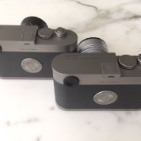Relative price of lenses cron vs lux
-
Recently Browsing 0 members
- No registered users viewing this page.
-
Similar Content
-
- 35 replies
- 2,541 views
-
- 14 replies
- 611 views
-
SL3 Rumored Price 1 2 3 4 6
By petereprice,
- 119 replies
- 12,933 views
-
- 7 replies
- 450 views
-
Anamorphic lenses 1 2 3
By 01maciel,
- 57 replies
- 4,877 views
-






Recommended Posts
Join the conversation
You can post now and register later. If you have an account, sign in now to post with your account.
Note: Your post will require moderator approval before it will be visible.